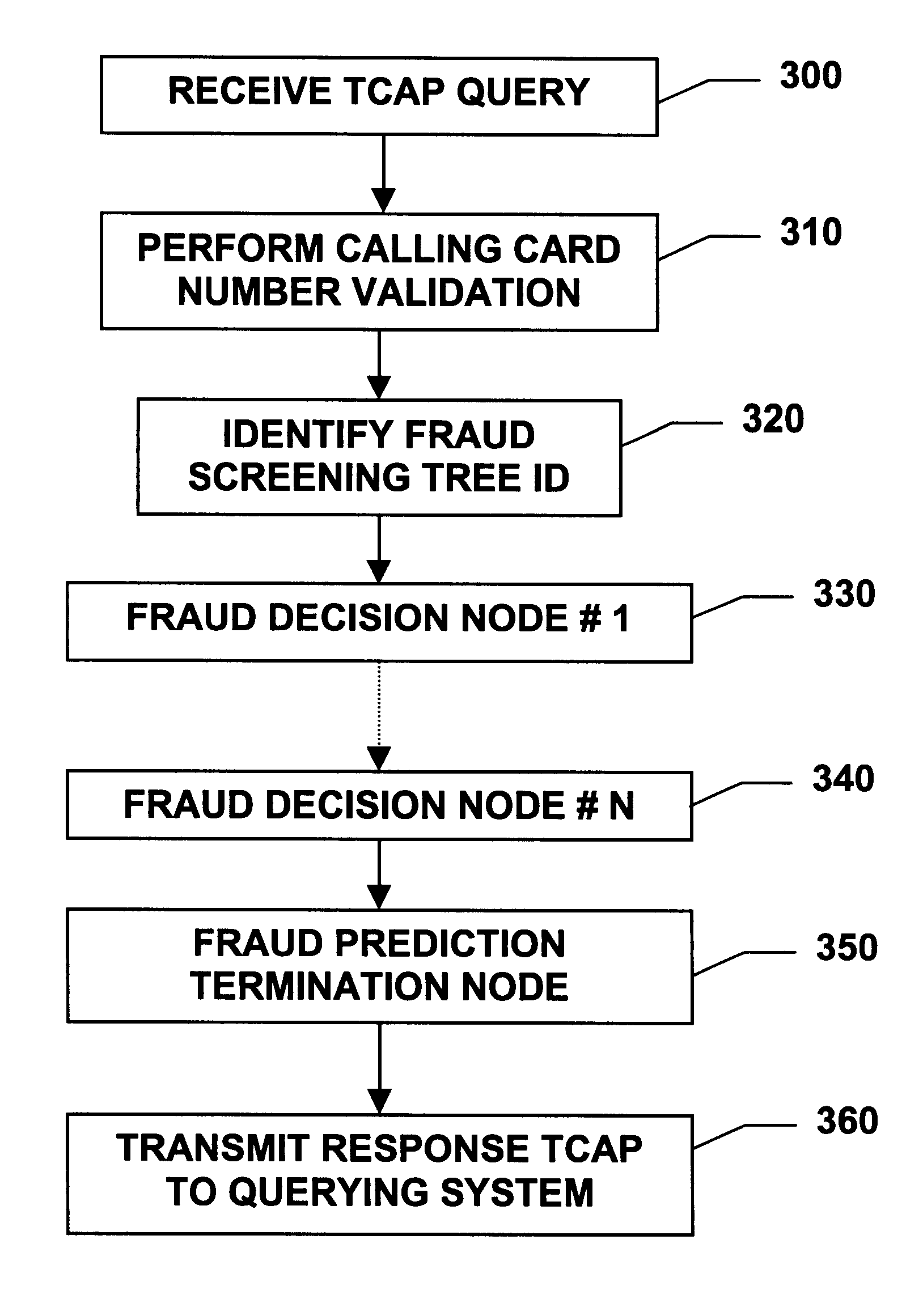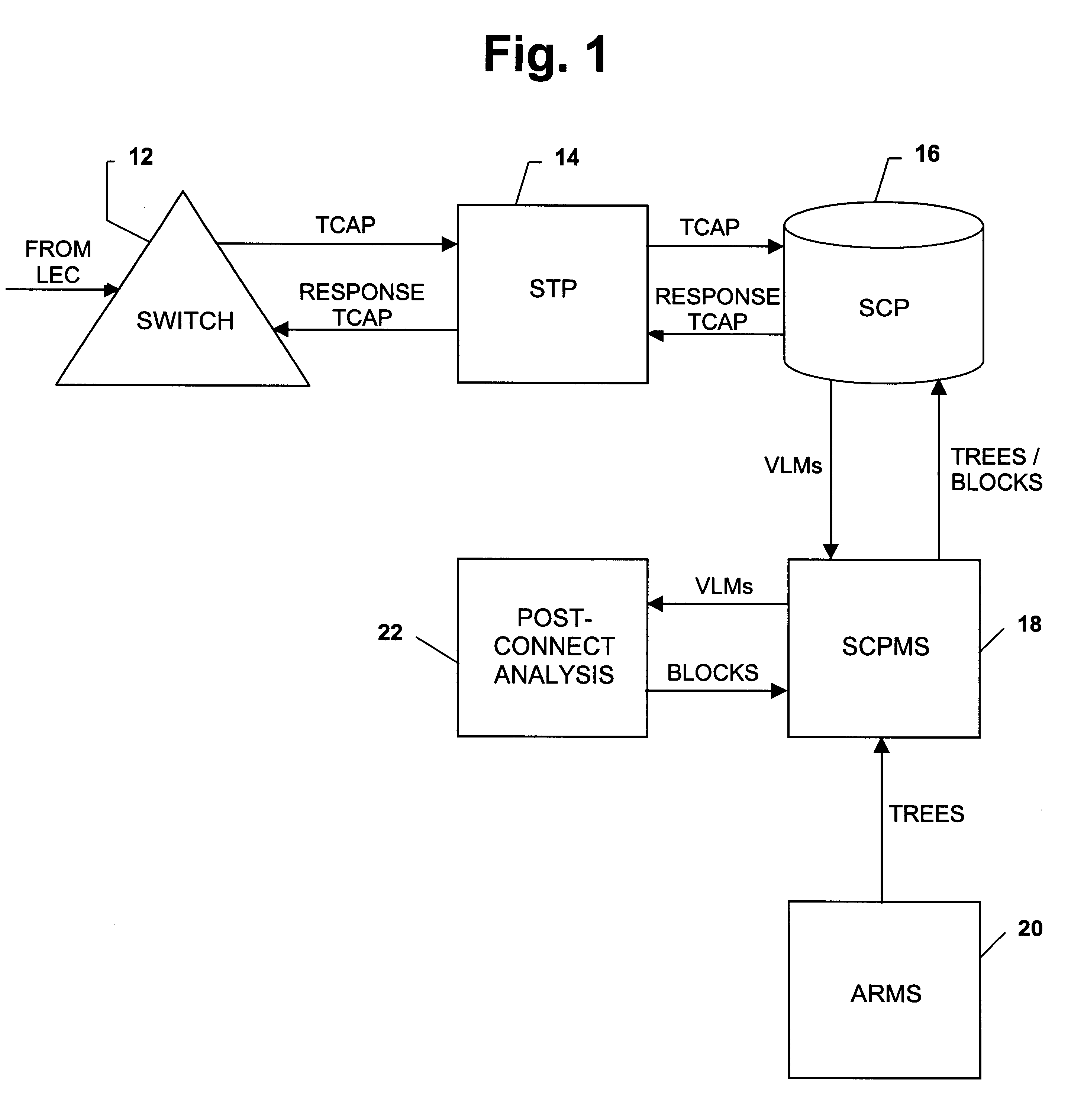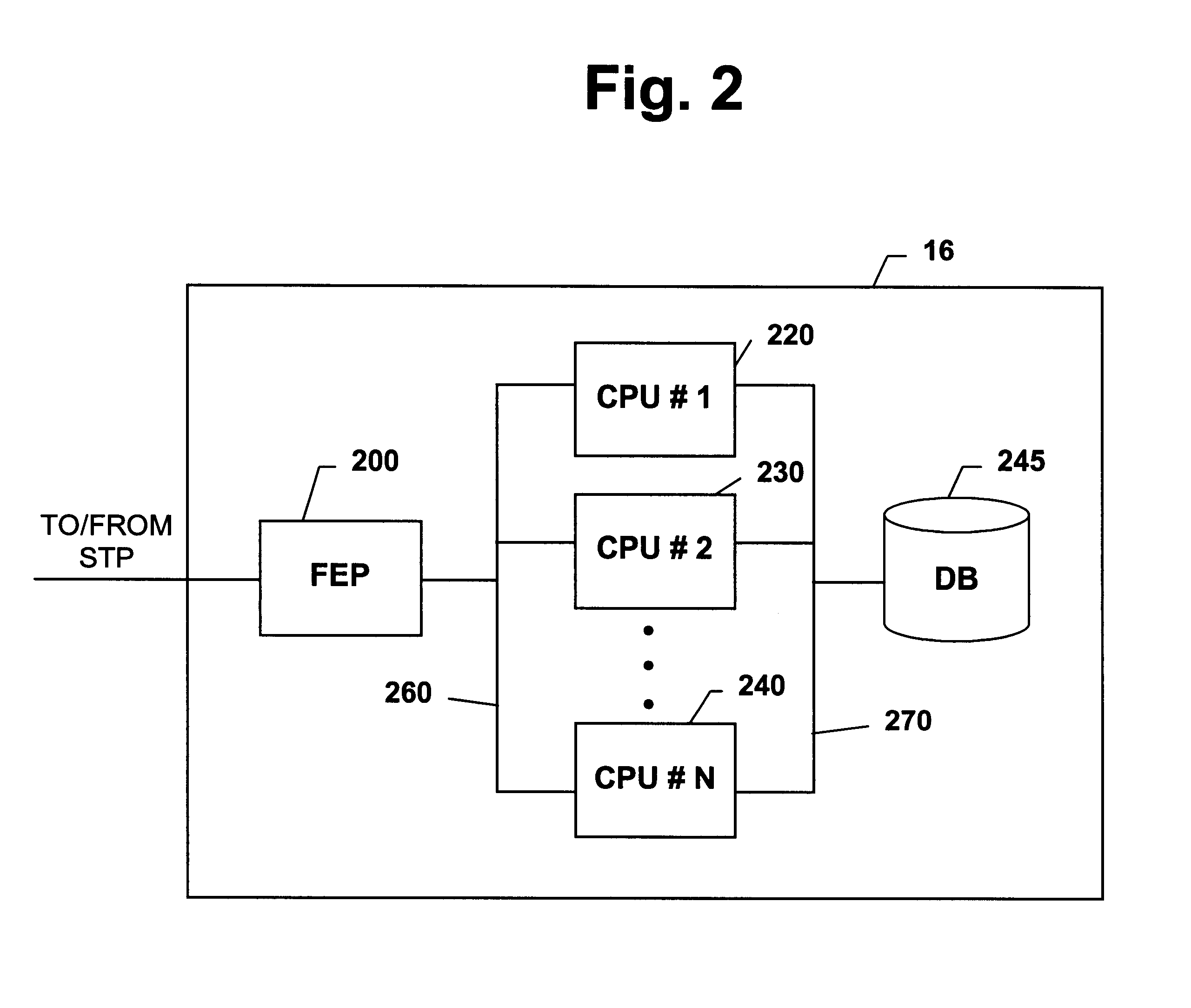System for detection and prevention of telecommunications fraud prior to call connection
a technology for detecting and preventing telecommunications fraud, applied in the field of telecommunications systems, can solve problems such as the evolution of fraudulent use of calling card numbers, the unauthorized or bogus use of telephone billing numbers, and the major abuse of telephone fraud
- Summary
- Abstract
- Description
- Claims
- Application Information
AI Technical Summary
Problems solved by technology
Method used
Image
Examples
Embodiment Construction
To illustrate the operation of a pre-connect fraud screening according to a preferred embodiment of the present invention, assume that the IXC provides long distance calling card service for LEC A and that historical data has established that calling card fraud is prevalent for calls made from payphones in Los Angeles to Guadalajara, Mexico during the hours of 11:00 p.m. to 7:00 a.m. Assume further that, by agreement with LEC A, the IXC employs the pre-connect fraud screening functionality of the present invention to block such calls.
Assume next that a person places a call on November 22 at 4:00 a.m. from a payphone "P" in Los Angeles to Guadalajara, Mexico, using an IXC calling card issued by LEC A. In response, switch 12 will pass a TCAP message through STP 14 to SCP 16. The TCAP message will define information about the attempted call, including the calling card number, the date / time of call, the originating point code, information digits and dialed number. Assume that the SCP fi...
PUM
 Login to View More
Login to View More Abstract
Description
Claims
Application Information
 Login to View More
Login to View More - R&D
- Intellectual Property
- Life Sciences
- Materials
- Tech Scout
- Unparalleled Data Quality
- Higher Quality Content
- 60% Fewer Hallucinations
Browse by: Latest US Patents, China's latest patents, Technical Efficacy Thesaurus, Application Domain, Technology Topic, Popular Technical Reports.
© 2025 PatSnap. All rights reserved.Legal|Privacy policy|Modern Slavery Act Transparency Statement|Sitemap|About US| Contact US: help@patsnap.com



